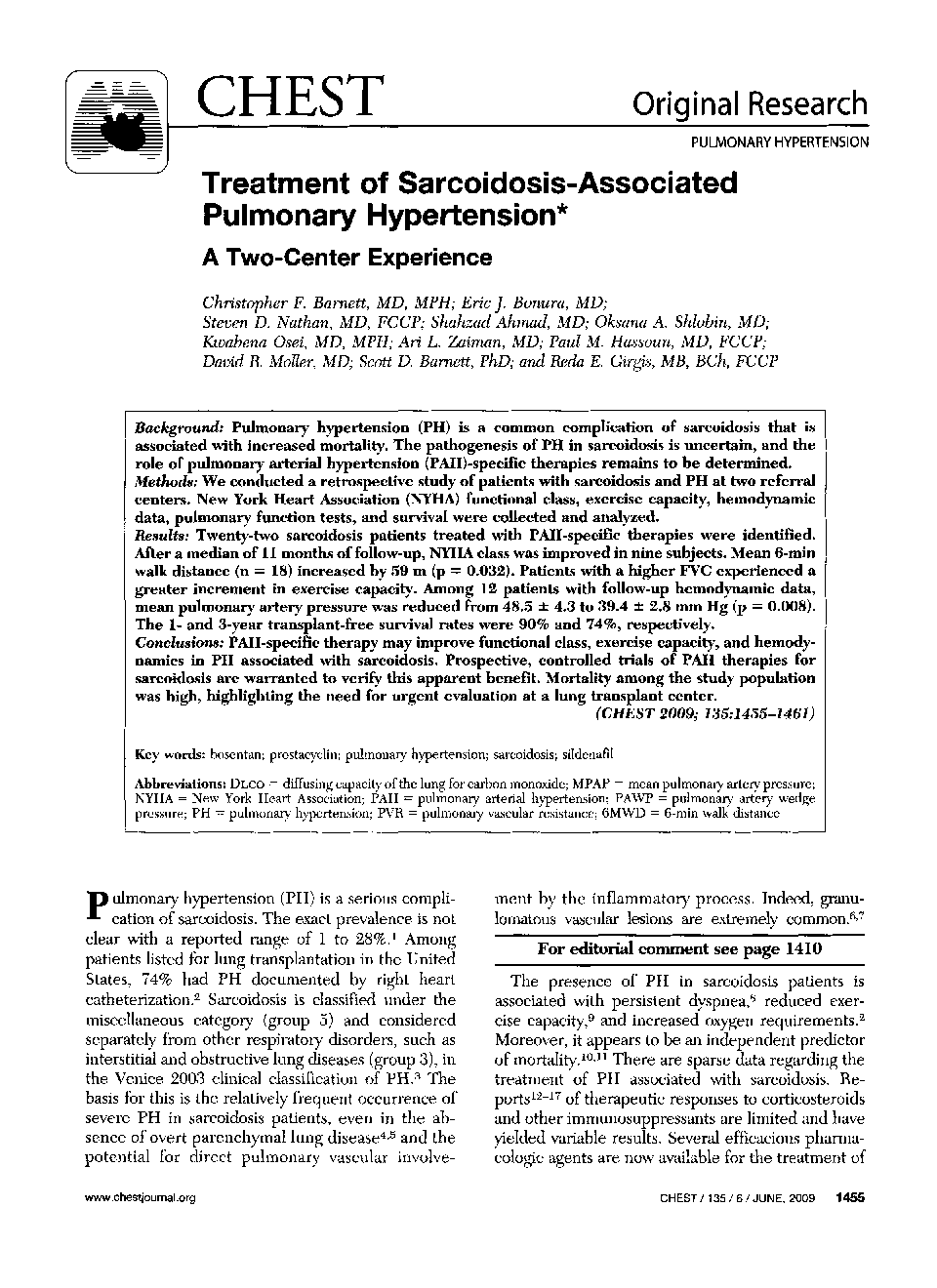| Article ID | Journal | Published Year | Pages | File Type |
|---|---|---|---|---|
| 2903421 | Chest | 2009 | 7 Pages |
BackgroundPulmonary hypertension (PH) is a common complication of sarcoidosis that is associated with increased mortality. The pathogenesis of PH in sarcoidosis is uncertain, and the role of pulmonary arterial hypertension (PAH)-specific therapies remains to be determined.MethodsWe conducted a retrospective study of patients with sarcoidosis and PH at two referral centers. New York Heart Association (NYHA) functional class, exercise capacity, hemodynamic data, pulmonary function tests, and survival were collected and analyzed.ResultsTwenty-two sarcoidosis patients treated with PAH-specific therapies were identified. After a median of 11 months of follow-up, NYHA class was improved in nine subjects. Mean 6-min walk distance (n = 18) increased by 59 m (p = 0.032). Patients with a higher FVC experienced a greater increment in exercise capacity. Among 12 patients with follow-up hemodynamic data, mean pulmonary artery pressure was reduced from 48.5 ± 4.3 to 39.4 ± 2.8 mm Hg (p = 0.008). The 1- and 3-year transplant-free survival rates were 90% and 74%, respectively.ConclusionsPAH-specific therapy may improve functional class, exercise capacity, and hemodynamics in PH associated with sarcoidosis. Prospective, controlled trials of PAH therapies for sarcoidosis are warranted to verify this apparent benefit. Mortality among the study population was high, highlighting the need for urgent evaluation at a lung transplant center.
